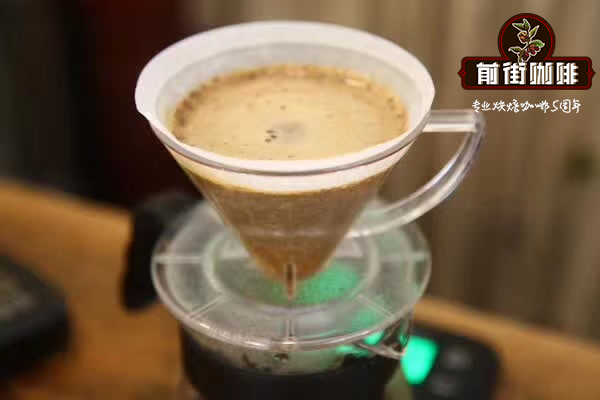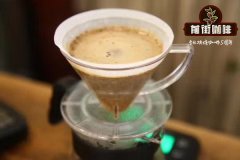Brazilian Queen Manor Yellow Bourbon Brazilian Queen Manor Yellow Bourbon

Professional Coffee knowledge Exchange more information about coffee beans Please note the coffee workshop (Wechat account cafe_style)
Front Street-Queen of Brazil / Bourbon
The Queen of Brazil
[country] Brazil: s ã o Paulo insurance state near S ã o Sebasti ã o da Grama
[name of queen] Queen's wife (Fazenda Rainha)
[master] Regina Helena Mello de Carvalho Dias belongs to the Carvalho Dias family
Bourbon, Yellow Bourbon
[processing method] pick it by hand and process it in the second half of the day
[territory] the Queen's Republic of Brazil (Morgiana).
[species] bourbon
[altitude] 1400-1950m
[processing method] Daily
[flavor] Sweet beans, sweet beans, and half-day use will brighten her acidity but return to sweet taste, and some of them even have the aroma of sweet fruit.
[please introduce]:
This coffee comes from FazendaRainha, an area of 280km in Vale da Grama, an ancient volcanic valley in Brazil.
In 2011, she won the championship in Brazil's COE competition. Fazenda Rainha is owned by the famous and venerable coffee family Carvalho Dias family. Since the beginning of the first COE Grand Cafe in Brazil in 1999, Carvalho Dias has won more than 12 times in the past 7 years, and even won the Champions, 9th, 11th and so on in 2004, many sizes in Brazil.
After years of longing for success, this family has won many awards in the last few years, and even the queen's Fazenda Rainfa, who gave up this year, still enjoys a golden record: 2000 troops, 2001 troops, and 29th place in 2005. So far, the queen has won three awards.
The Carvalho Dias family is also the founding member of the Brazilian Fine Coffee Association. It is obvious to all that the maintenance of coffee consumption and the protection of the environment are obvious. In the family farm, the use of natural waterfalls to generate water power generation is self-sufficient in electricity demand (another permanent member of the family is named the waterfall after this waterfall). The construction of churches, classrooms, nurseries, medical stations, maintenance of primitive forests with original plants, and sustainable afforestation. In the case of the Queen, for example, due to the low level of environmental protection, due to the high elevation of the ground and non-plain terrain, it is impossible to use a machine for harvesting, but to harvest the fruit completely by hand. And planted a kind of bourbon with low yield and high yield to serve as the representative of Brazilian coffee!
Queen's peeled Meat processing system (Coffee processing system):
The ripe peach fruit is picked on the cloth pocket by hand to avoid landing on the ground. The coffee fruit harvested on Sunday must be sent to the processing site where it is picked for half a day (Pulped Natural). The coffee fruit is picked by hand and picked with a cloth pocket. This is to avoid the soil flavor and any inappropriate fermentation flavor. As soon as the harvested coffee fruit arrives and processed, wash the coffee fruit immediately: wash the coffee fruit. And according to the size of the beans to remove the unqualified or lost fruit (b ó ia beans), pass the qualified beans, continue to peel the flesh (using the pulper machine).
There are more than 200 kinds of this kind of coffee, and the rolling mountains make it impossible for large-scale machinery to be harvested, so all the coffee here needs to be harvested by hand.
The waste is processed by daily / half-day treatment, and the semi-washing method is done by drying rack and baking machine. After the machine is turned off, it has to be done by hand. A lot of work requires farmers to live in the farm all the year round. All employees and their families can enjoy housing, health care and education benefits here.
Yun is a member of a medium-sized farm organization of local Grama Valley, which mainly exports high-quality coffee of this variety. The organization's office is located in nearby Pocos de Caldas, and it also has a state-level cup laboratory equipped with a large database. The organization also cooperates with local universities and other institutions to carry out research, including Lavras University, where the famous Dr. FlavioBorem comes from the agricultural research center of the university.
The queen has obtained the following records:
13th in 2014 COE Cup of Excellence
No. 02 COE Cup of Excellence in 2013
No. 08 COE Cup of Excellence in 2012
2011 COE Excellence Cup Champion
No. 20 in 2010 COE Cup of Excellence
No. 06 COE Cup of Excellence in 2009
No. 14 in 2008 COE Cup of Excellence
This bean is 100% peculiar, and its origin can be traced back to Reunion Island, the birthplace of the species. French explorers brought coffee here for the first time in the 18th century, so there is another name for this product: French missionaries. In the 20th century, it was introduced to Africa and then to Brazil, and its derivatives are now all over Africa and the Americas. The Bourbon species planted in Brazil, because of the shadow of its sexual genes, makes the fruit really pale.
This bean is processed by the Cerezadescascado method developed in Brazil. This kind of honey-like natural treatment makes the coffee coffee taste better and tastes better, with an effect between washing and whole-day processing. In the process, use a small amount of water to remove the pulp and peel, then put the coffee directly on the drying rack and turn it constantly to ensure that all the coffee is light, and after two days of drying, mechanical baking is carried out to reach the desired moisture content.
The processed coffee beans are relatively stable and can be preserved for a long time, with low water content and larger grains. 98% of the beans can reach more than 16 mesh, and half of them can reach 18 mesh.
The Brazilian grading system, which distinguishes the proportion, size, taste and taste of defects, is a self-established grading system that is popular from other countries. For example, the "Brasil Santos NY2 SC17/18 SS FC" NY2 classifies the proportion of defects: the larger the number, the greater the proportion of defects. The order is 2, 2, 3, 3, 3, 4... NY indicates that it is based on the treaty classification standard.
END
Important Notice :
前街咖啡 FrontStreet Coffee has moved to new addredd:
FrontStreet Coffee Address: 315,Donghua East Road,GuangZhou
Tel:020 38364473
- Prev

Honduran litchi wine barrel fermented Honduran coffee Honduran lychee coffee beans
Professional Coffee knowledge Exchange more Coffee Bean Information Please note Coffee Workshop (Wechat account cafe_style) Front Street-Moca é e lychee in Honduras Honduras Finca Mocha Lychee Lan Moca é e lychee in Honduras: produced in Honduras: Guara: Moca é e altitude: 1500-1700m: Kaddura, Kadu
- Next

Honduras Orange Farm Honduras Orange Farm Katuai
Professional coffee knowledge exchange More coffee bean information Please pay attention to coffee workshop (Weixin Official Accounts cafe_style) Front Street-Honduras Sweet Orange Manor Introduction [Honduras Sweet Orange Manor] Honduras El Naranjo Country: Honduras Production Area: Makala Marcala Elevation: 1425 meters Variety: Kaduai Itinerary Method: Washing 01| Honduras, Honduras
Related
- What is the standard process for the purpose of coffee cup testing? What is the difference between hand-brewed coffee and cup testing?
- How to use hand-brewed coffee paragon small golden balls? How does cold coffee lock in the aroma of coffee?
- Is American coffee black? What is the difference between American coffee and drip coffee?
- Unexpected! Well-known tea beverage brand Lele Tea will withdraw from the Zhengzhou market!
- Starbucks enters the fashion and beauty industry?! Netizen: Give me an ice American eye cream
- Why can American refills for free? The difference between Americano and American drip pot coffee
- Being chased out of the rain in front of Starbucks?! Store: Sheltering from rain under umbrellas poses a safety hazard
- The white moonlight has changed?! Lucky launches "Big Winter Pear American"
- Hand-brewed coffee three-stage method, high-sweet and universal brewing method to share! What does the high sweet water level of hand-brewed coffee mean?
- What is the difference between raw, refined and full espresso coffee? How to extract espresso and taste good?

